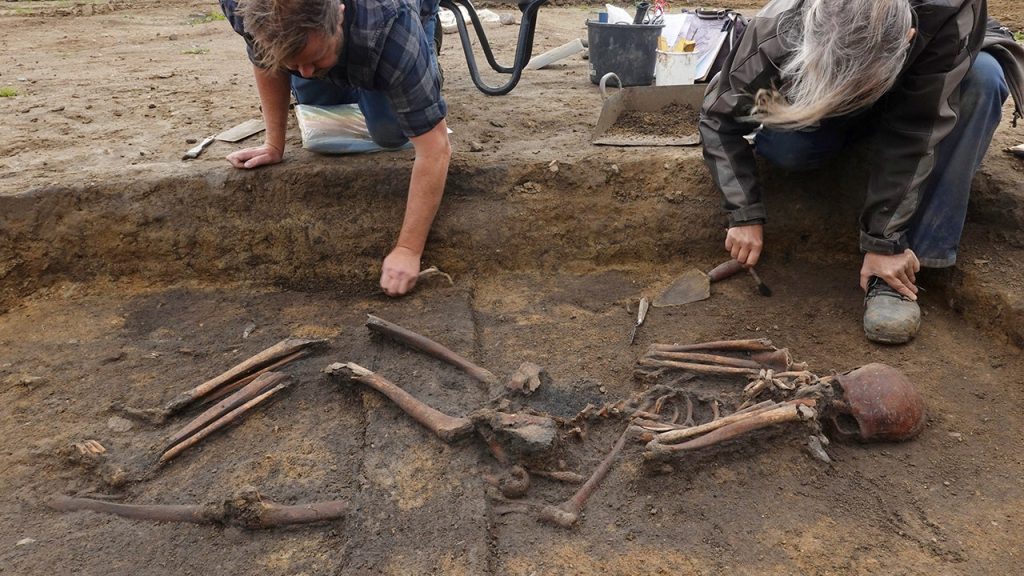Archaeologists from the Museum Odense in Denmark have unearthed 50 well-preserved Viking skeletons in the village of Åsum, along with five cremated graves. This discovery is considered to be unusual due to the exceptional condition of the skeletons, which were buried with artifacts from outside the country, suggesting international trade connections. The museum curator, Michael Borre Lundø, expressed excitement about the scientific analyses that can be performed on the skeletons, including determining their general health, diet, origins, and potential familial relationships. This discovery presents a unique opportunity to learn more about the lives and customs of the Vikings buried in Åsum.
The well-preserved nature of the skeletons in Åsum has allowed for special aDNA analyses to be conducted, offering the possibility of learning where these individuals came from and whether the same families were buried there across multiple generations. The exceptional preservation of the skeletons has been attributed to high water levels and good soil conditions, which prevented them from decomposing. Lundø noted that typically, only a few teeth would be left in Viking graves, but in Åsum, the skeletons are fully preserved, providing a wealth of new information. Some of the skeletons were buried with items such as knives, brooches, glass pearls, and even a wagon, providing insight into the personal belongings and cultural practices of the individuals buried in Åsum.
One of the graves in Åsum contained a woman buried in a wagon with her finest clothes and belongings, including a glass bead necklace, an iron key, and a knife with a silver-threaded handle. Additionally, a finely decorated wooden chest was found at the foot of the wagon, the contents of which remain unknown. Another grave nearby contained a bronze three-lobed brooch, a red glass, an iron knife, and a small piece of rock crystal that was likely imported from Norway. These artifacts, along with others found in the graves, indicate connections to international trade networks that were prevalent during the Viking Age. The excavation in Åsum was conducted in preparation for renovating an electrical grid and has shed light on the lives of both high status individuals and a community of farmers buried in the area.
The burial ground in Åsum covers approximately 2,000 square meters and is believed to date back to the 9th and 10th centuries. The discovery of these well-preserved Viking skeletons offers a unique opportunity for researchers to gain valuable insights into the lives, customs, and connections of the individuals buried in Åsum. The museum curator, Lundø, emphasized the significance of this discovery and the potential for new discoveries and knowledge to be gleaned from the analysis of these extraordinary skeletons. The findings in Åsum have the potential to deepen our understanding of Viking society, culture, and trade networks during the Viking Age in Denmark.


